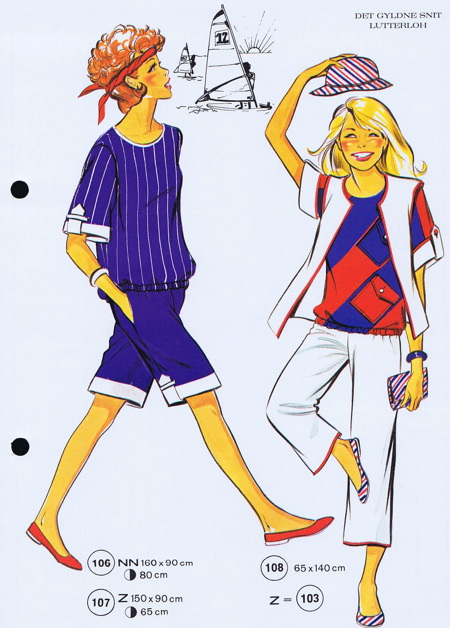Scanning Around With Gene: The Art of Sewing
When I grew up I was the youngest of three children with two older sisters. This meant I had to spend much of my time shopping with my mother and sisters for clothing – I was dragged along to dress shops, department stores and, worst of all, fabric stores. Even though my mother and sisters weren’t that big on sewing, it seems like we ended up in a fabric store looking at sewing patterns and choosing fabric way too often for my tastes. This was the Sixties, after all, and making your own clothes was much more popular than it is today.
So while my sisters perused the pattern books, I would amuse myself checking out the sewing machines, scissors, buttons and anything else I could find of interest.
The one impression that has stuck with me all this time is the type of illustration that the various patterns used to show what the clothing would look like when completed. These drawings pictured women and men in various poses, and did their best to make the outfits look contemporary and fashionable. Patterns, which were printed on thin tissue paper, typically all came in the same-sized 6 inch by 8 inch envelopes and were printed in full color on the front. Click on any image for a larger version.
At that age to me all the illustrations pretty much looked the same – I wasn’t really concerned with fashion. But looking back now I can see that there was, of course, a wide variety of images, even though the illustration style was similar between brands.
I’m not sure who did the illustrations and what they worked from. It could be the clothing designers themselves did the illustrations, or maybe artists worked from photographs (which I doubt as I’m not sure why they wouldn’t have used the photos instead).
Patterns at that time typically cost less than a dollar, so there couldn’t have been a lot of profit in each sale. Indeed, the whole idea of making your own clothes was to save money.
Fashion is very time sensitive and becomes dated very quickly as styles change. Consequently, the inventory of patterns had to change fairly frequently, as did the imagery of the people wearing the various outfits. No one, especially teenage girls, wants to look out of style.
Like so many other forms of commercial illustration, the people behind these images were un-credited – it is very rare to find any signatures on the art. I imagine these drawings being cranked out in “illustration mills” at the various pattern manufacturers.
Just looking at these illustrations gives me chills as I think back on all that wasted time in fabric stores with my mother and sisters – they never made any clothing for me. But I do greatly respect the artists who toiled away anonymously trying to make some pretty lame clothes look fashionable and appealing. That couldn’t have been easy.


















Gene, The artists who created this sort of art were known as “fashion illustrators” and were generally paid a few dollars per figure. As for a product retailing under a dollar not having much profit, keep in mind the dollar’s buying power has significantly decreased since the 1960’s. I have no doubt they made a handsome profit. After all, in 1970 the minimum wage was only $1.60! A forty hour work week would only pay $64.00 – before taxes. Gene, I recommend that the next time you write an article, you might want to actually take the time to do background research about the subject matter. Your articles will be more interesting.
The illustrations would be way more useful than photographs because you could see the construction and relationships of the pattern pieces
My mother or I had at least half of these patterns. What a great trip down memory lane.
The pattern companies had a staff of illustrators. It would’ve been too costly for the pattern companies to purchase the fabric, have the garment made, hire a model and photographer.
So well put — I totally agree.
To the poster of the first comment – this is a column and not an article. It’s about reminiscing about past images and not a factual reporting of events. Poster, I recommend you actually take the time to learn the difference before issuing unwarranted criticism.
And Gene, thanks for these illustrated trips into the past!
Enjoyed this. Brought back some memories. But the “large” pattern sizes coupled with “small” bust sizes – made me smile at the differences between then and now.